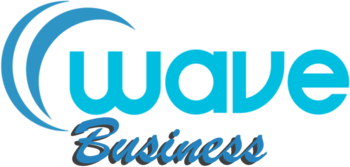
Having a prominent brand presence on social media is like having your point of contact and communication with your customers; you show and explain who you are, what you do, and what your product/service portfolio is.
These make social media an integral part of any business’s marketing strategy, especially when starting small. If you’re a small business trying to figure out how to leverage social media, the below-mentioned tips can undoubtedly impart some relevant wisdom to your aid.
1. Optimize your profile for maximum visibility
Don’t think of your bios as an empty introductory spot where you can fill it with anything; it will not matter. Firstly, choose your preferred social media platform, with Instagram being the most viable and accessible platform. From there, consider your social media bios an essential opportunity to connect with your audiences through relevant customer touchpoints.
Aim to ensure that your bio is specific and explains what your business is all about. Clearly define what your business is, what your product portfolio is, and what services and markets you cater to. A profile picture representing your brand and its aesthetic is also important when optimizing your social media profile for the best impact.
Make the most of Instagram’s business tools by adding all your relevant contact details, such as your website, contact number, email, Whatsapp contact, etc. Since you’re optimizing your profile, adding pertinent keywords related to your business, market, and target audience can also be helpful.
2. Leverage user-generated content (UGC)
If you’re just starting out creating a social media presence, influencer marketing may be the first thought that comes to your mind. Just because it is heavily done doesn’t mean it’s the best option.
If you’re a small business, opting for influencer marketing or collaborations immediately may not be viable since it requires a lot of investment and heavy monetary compensation to multiple influencers simultaneously. Instead, aim to gather user-generated (UGC), unsponsored content that your users or other micro-influencers create for you without financial compensation.
How you deal with this marketing strategy is entirely up to you. You can let real-time users review your products and share their reviews online, or you can send micro-influencers or recurring customers your new products or something they haven’t tried before in return for content that can be used for marketing purposes.
3. Jump on trending content and challenges
Social media trends may be the best and the most feasible marketing tool for your small business on social media. Hundreds of grains come and go weekly, allowing your business to pick a few that resonate with your brand and business image.
Trends can provide you with fun content that is engaging and appealing to your audiences. Your marketing team must stay current with trends, such as trending hashtags, viral memes, trending audios, or funny clips and videos that are making the rounds and can be used to create content.
Use these trends to bring your product/services to the forefront. You can even use PosterMyWall’s small business flyer templates to create static content, like carousel posts, which are all raging nowadays, and start a new trend yourself.
4. Utilize paid ads for targeted reach
As a small business, paying to have a product/service highlighted may not be the best option, but it is highly lucrative. Many people aim to grow organically, but not all growth is created equally. The reach and growth that you gain through paid ads are also organic; it’s just that you’re paying to get your business noticed, which, if it resonates with other people, will likely support it.
Meta ads recently launched extensive marketing tools for businesses to leverage and create customized campaigns. These tools can help you make an ad campaign that suits your business and marketing goals while keeping a keen eye on your campaign’s demographics to target a specific audience.
Aim to use location-based keywords in your ads for a chance to try your luck at geo-targeting, which means your ads will be displayed to the target audience within your vicinity.
5. Monitor, analyze, and improve your strategy
Even though keeping an eye out on your analytics isn’t exactly a marketing strategy, many businesses often overlook it. What is the point of running a successful social media marketing campaign when you’re not constantly improving and enhancing it to maximize its efficiency and outcome?
Your campaign should prioritize monitoring, analyzing, and enhancing your strategy via analytics. Consider using insights from your Instagram professional dashboard to see how your current art campaigns perform.
Try to read between what content is more engaging and what is failing to perform as you expect. Social media analytics can also give you an insight into the frequency and the time of posting your content, which can help your content get a little boost and perform better.
Running social media marketing isn’t a shortcut that will take your business to new heights overnight. It is a gradual process that requires effort and creativity to stand out in the hoard of social media businesses and profiles. You will wonder if you create authentic content that expresses your business’s essence. Happy marketing!


